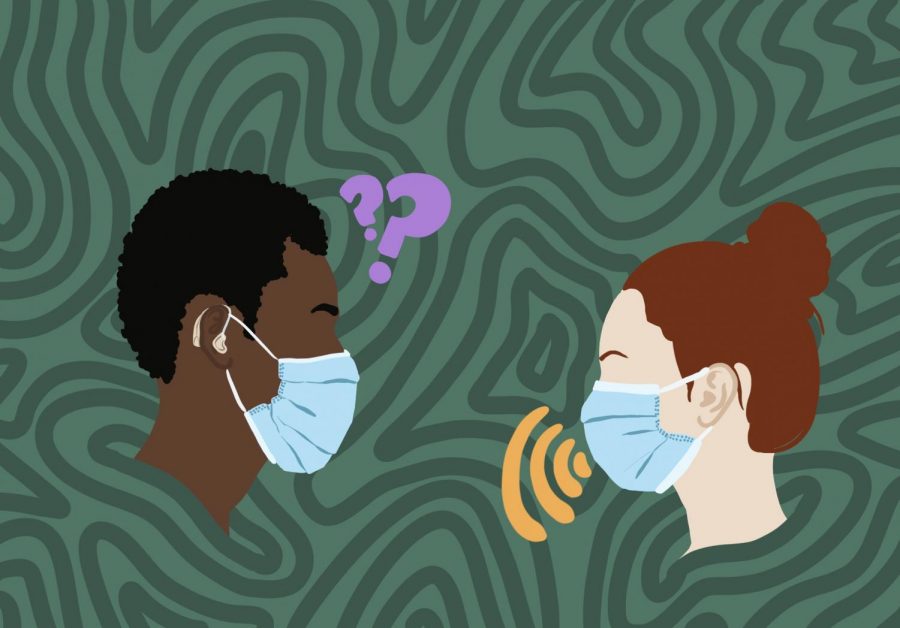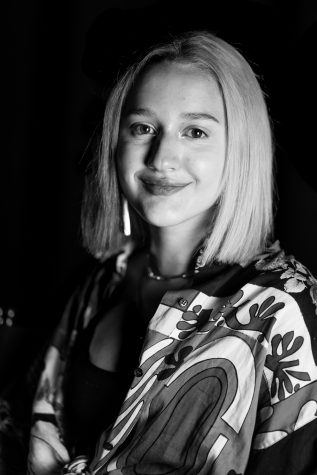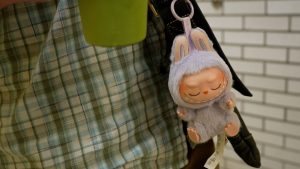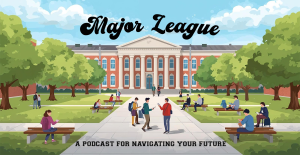Deafness in the Age of COVID
For millions of deaf or hard of hearing Americans, pandemic health precautions have come at the expense of a prime source of communication.
The use of masks has made communication even more difficult for the hearing impaired.
January 28, 2021
Almost everyone has been asked the question, “If you had to lose any one of your senses, what would it be?”
Unfortunately, not everyone gets a choice.
The pandemic has been hard on everyone. Millions of people are out of jobs, more than 420,000 Americans have died from COVID-19, and nearly every single one of us feels helpless as we stare down the massive amounts of changes we have and will continue to face.
But for the 48 million Americans who are deaf or hard of hearing, the pandemic posed an entirely different set of problems.
Many Deaf Americans rely on speechreading (also known as lip reading) to communicate, especially because only one million out of nearly 329 million Americans are fluent in American Sign Language, or ASL. But the enforcement of masks to stop the spread of COVID-19 has made that impossible.
Jennifer Pirring is a supervisor in the Deaf/HH Support Program with the Allegheny Intermediate Unit, which aims to provide students with instruction from deaf or hard of hearing teachers and sign language interpreters. Pirring is also a sign language interpreter herself.
“Providing effective ASL requires interpreters to use their entire bodies including all parts of their face to create meaning within ASL, not just for speechreading,” she said. “Some words in ASL are represented by mouth, nose, and cheek movements, so some adverbs and adjectives get lost in the message. Using a mask with a clear window pane or a clear face shield are better options for people viewing interpretation who can have access to those critical language features.”
There isn’t a certain number of how many people within the deaf and hard of hearing community are able to lip read, but considering how much hearing people rely on lip reading and body language to communicate, it’s safe to assume a significant amount of deaf people use it. Now that masks have covered up not only the mouth but also a large portion of the face, many words are misunderstood or lost entirely.
“Those of us who are not deaf likely don’t realize how much we depend on these same cues when we are listening,” Pirring explained. “Have you ever found yourself talking to someone without looking at them and then turning to look when you didn’t ‘hear’ or understand something they said? There you go– speechreading.”
As Pirring mentioned, there are COVID safe options available, but many people don’t own or have access to masks or face shields that are conducive to communicating with deaf individuals. Not everyone can afford to purchase masks with clear windows, especially with the dire circumstances the pandemic has imposed. Even those who can afford it might not want to shell out upwards of $20 for one mask.
Considering the general rarity that a mask like this would come in handy– especially in Pennsylvania, where compared to the population of 12.8 million, only an estimated one million are deaf or hard of hearing– not many people own masks that make it easy for deaf people to communicate with them.
Additionally, returning back to working environments has posed a challenge for many deaf citizens, who now struggle to communicate with their peers.
Mrs. Large, a special education teacher at North Allegheny, has single-sided deafness in her right ear.
“I had brain surgery in January 2016 for a brain tumor called an Acoustic Neuroma. When they removed it, they had to cut my balance and hearing nerves,” Large said said. “I do have cross hearing aids, which isn’t always a perfect solution, but it definitely helps. I used to rely on reading lips, but now with masks, that option isn’t there anymore.”
This school year has posed many more challenges for Large than other teachers adapting to a hybrid learning model.
“I had to explain to everyone that I normally read lips and that they need to be patient with me,” she said. “So far, I’ve had to ask people to repeat what they said or have others help me. I’ve been self-advocating from the beginning, which will hopefully help me in the long run.”
Certainly, the pandemic has paved a few new narrow paths of accessibility — meetings on platforms like Zoom and Google Meets now have chat features, making it easier for non-verbal folks to communicate in groups– but for every door opened, there has been another one closed.
“In the remote learning environment, some teachers are now teaching with their cameras off,” Pirring said. “So speechreading becomes unavailable for any of us, but more significantly impacts those students and teachers who are deaf or hard of hearing.”
It can feel impossible to know what to do or how to go about communicating with people that speak a different language, made all the worse when part of that language is obstructed by other health and safety measures. But there are always ways to be more inclusive of the deaf and hard of hearing community, even if they are as small as spending an extra few bucks on a mask.














